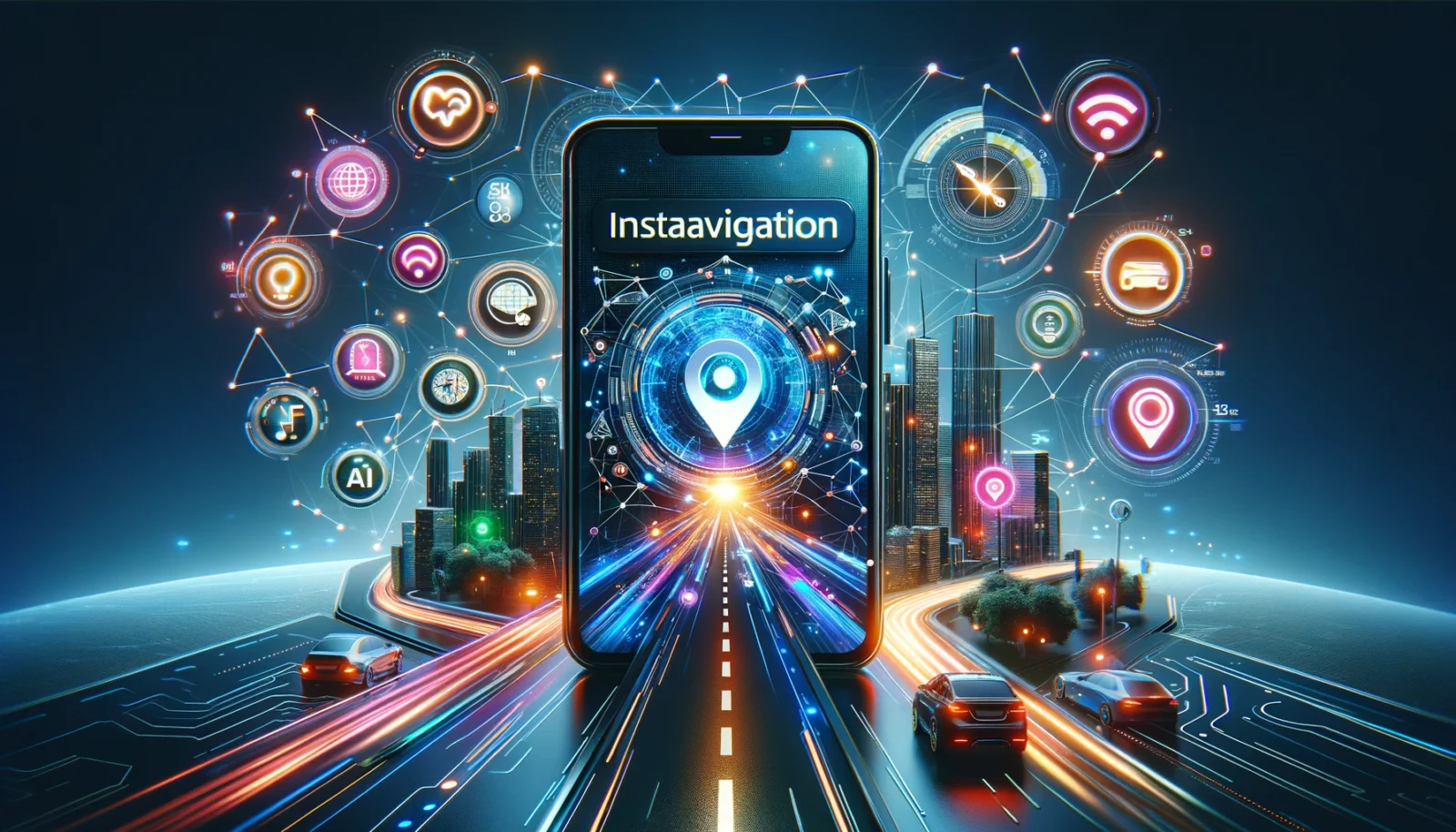In an era where instant gratification has become the norm, the field of navigation is experiencing its own revolution. Enter Instanavigation, a concept that is reshaping how we approach and utilize navigation technologies. Instanavigation leverages real-time data and advanced algorithms to provide users with highly accurate, dynamic, and contextually relevant navigation solutions. This article delves into the various facets of Instanavigation, exploring its technology, applications, benefits, and potential future developments.
Almost all social networks have Instagram Stories, allowing people to share numerous temporary moments with people. Perhaps you want to contain your curiosity, or maybe you do not want to invade another person’s privacy; sometimes, it is necessary to view Instagram Stories under the condition of anonymity. This is where it comes to the rescue.
Understanding Instanavigation in 2024
It refers to an advanced navigation system that emphasizes real-time data processing and instantaneous feedback to enhance the navigation experience. Unlike traditional navigation systems that rely on pre-loaded maps and static data, it harnesses the power of real-time information to offer more precise, responsive, and adaptable navigation solutions.
At its core, it integrates multiple data sources, including GPS, sensors, traffic information, and environmental data, to deliver a comprehensive and up-to-date navigation experience. This dynamic approach allows for real-time adjustments based on changing conditions, user behavior, and contextual factors.
How does Instanavigation work?
It works by using an algorithm that connects to Instagram’s servers and retrieves the Stories of the users you want to view. It then displays them on its platform without revealing your identity.
This means that the person whose Story you are viewing will not be notified, and your name will not appear in their viewer list.
It’s a great way to view Stories without being seen by others, especially if you’re trying to avoid awkward situations or keep your privacy intact.
Technology Behind Instanavigation
The backbone of it is a sophisticated blend of technologies that work in tandem to deliver seamless navigation experiences. Some key technological components include:
- Real-Time Data Integration: Its systems aggregate data from various sources, including GPS satellites, traffic monitoring systems, weather services, and local sensors. This data is processed in real-time to provide accurate and timely navigation guidance.
- Advanced Algorithms: Algorithms play a crucial role in it. They analyze incoming data, predict traffic patterns, and adjust routes dynamically. Machine learning and artificial intelligence (AI) are often employed to enhance the accuracy and efficiency of these algorithms.
- Cloud Computing: To handle the massive amounts of data and ensure real-time processing, Its systems rely on cloud computing. This enables the storage, processing, and analysis of data in a scalable and efficient manner.
- User Interface: The user interface of it applications is designed to be intuitive and responsive.
- Connectivity: Seamless connectivity is essential for it. High-speed internet and mobile networks ensure that real-time data can be accessed and transmitted without delays.
Applications of Instanavigation
It has a wide range of applications across various domains. Here are some notable examples:
- Personal Navigation: For everyday users, It offers improved accuracy and convenience. Applications like Google Maps and Waze incorporate real-time traffic data, road closures, and user-generated alerts to provide optimal routes and estimated arrival times.
- Automotive Industry: Modern vehicles are increasingly equipped with advanced navigation systems that utilize it in technologies.
- Public Transportation: It is transforming public transportation by providing real-time updates on bus and train schedules, route changes, and delays. This helps passengers make informed decisions and reduces wait times.
- Logistics and Fleet Management: For businesses that rely on transportation and delivery services, It offers significant benefits. It enables efficient route planning, real-time tracking, and dynamic adjustments to optimize delivery times and reduce operational costs.
- Emergency Services: In emergency situations, It can be a lifesaver. Real-time navigation aids emergency responders in reaching their destinations quickly and efficiently, even in complex or changing environments.
- Tourism and Travel: Travelers can benefit from it by accessing real-time information on local attractions, restaurants, and accommodations. Enhanced navigation tools help tourists explore new places with confidence and ease.
Benefits of Instanavigation
The adoption of it offers numerous advantages, including:
- Enhanced Accuracy: Real-time data ensures that navigation guidance is based on the most current information.
- Dynamic Adaptability: Its systems can adapt to changing conditions, such as traffic congestion or road closures. This flexibility helps users avoid delays and find the most efficient routes.
- Improved Safety: By providing timely updates and alerts, it contributes to safer driving and travel. Users are informed about potential hazards, accidents, and road conditions that may impact their journey.
- Increased Efficiency: Real-time route optimization minimizes travel time and fuel consumption.
- User Convenience: Its applications are designed to be user-friendly and responsive. Features such as voice guidance, real-time updates, and interactive maps enhance the overall user experience.
Future Developments in Instanavigation
As technology continues to evolve, it is likely to see several exciting developments:
- Integration with Autonomous Vehicles: The future of it will likely involve closer integration with autonomous vehicles. Advanced navigation systems will work in tandem with self-driving technology to ensure safe and efficient travel.
- Enhanced AI and Machine Learning: Continued advancements in AI and machine learning will further improve the accuracy and predictive capabilities of it systems. These technologies will enable more sophisticated route planning and real-time adjustments.
- Augmented Reality (AR): AR is poised to play a significant role in the future of navigation. AR overlays can provide visual cues and interactive elements that enhance the navigation experience, making it more intuitive and engaging.
- Personalization: Future systems may offer greater levels of personalization, tailoring navigation recommendations based on individual preferences, habits, and historical data.
- Smart City Integration: As cities become smarter and more connected, Instanavigation systems will likely integrate with urban infrastructure to provide even more accurate and contextually relevant navigation solutions.
Conclusion
It represents a significant leap forward in the realm of navigation technology. By leveraging real-time data, advanced algorithms, and intuitive interfaces, it offers a more accurate, adaptable, and user-centric navigation experience. As technology continues to advance, it will play an increasingly important role in shaping how we travel, drive, and explore the world around us.
FAQ on Instanavigation
1. What is Instanavigation?
It refers to advanced navigation systems that use real-time data and dynamic algorithms to provide up-to-date, accurate navigation guidance. Unlike traditional systems that rely on static maps, Instanavigation integrates live data from various sources to adapt routes and recommendations instantaneously based on current conditions.
2. How does Instanavigation work?
Instanavigation works by aggregating real-time data from sources like GPS satellites, traffic monitoring systems, weather services, and local sensors. Advanced algorithms process this data to provide users with the most accurate and timely navigation advice. The system continually updates routes and information to reflect changing conditions.
3. What technologies are involved in Instanavigation?
Key technologies involved in Instanavigation include:
- Real-time data integration from GPS, traffic, weather, and other sensors.
- Advanced algorithms and machine learning for predictive analytics and route optimization.
- Cloud computing for scalable data processing and storage.
- User interfaces featuring voice commands, touch interactions, and augmented reality (AR) overlays.
- Connectivity through high-speed internet and mobile networks.
4. What are the main benefits of Instanavigation?
The main benefits include:
- Enhanced accuracy with up-to-date navigation guidance.
- Dynamic adaptability to changing conditions like traffic and road closures.
- Improved safety through real-time alerts and hazard warnings.
- Increased efficiency by optimizing routes and reducing travel time.
- User convenience with intuitive interfaces and real-time updates.
5. How does Instanavigation improve driving safety?
Instanavigation improves driving safety by providing real-time updates about road conditions, traffic congestion, and potential hazards. Users receive alerts about accidents, road closures, and weather conditions that could impact their journey, allowing them to make informed decisions and avoid dangerous situations.
6. Can Instanavigation be used for public transportation?
Yes, Instanavigation is highly beneficial for public transportation. It provides real-time updates on bus and train schedules, route changes, and delays, helping passengers plan their journeys more effectively and reducing wait times.
7. How does Instanavigation benefit businesses and logistics?
For businesses and logistics, Instanavigation offers efficient route planning, real-time tracking, and dynamic adjustments. This leads to optimized delivery times, reduced operational costs, and improved productivity by minimizing delays and fuel consumption.
8. Is Instanavigation compatible with autonomous vehicles?
Advanced navigation systems will complement self-driving technology by providing real-time data and adjustments, ensuring safe and efficient travel in various driving conditions.
9. What role does augmented reality (AR) play in Instanavigation?
AR enhances Instanavigation by overlaying visual information onto the real world. For example, AR can display directions, points of interest, and hazard warnings directly on the user’s view of the road or surroundings, making navigation more intuitive and engaging.
10. How does Instanavigation handle real-time traffic updates?
Instanavigation systems receive real-time traffic data from various sources, including traffic cameras, sensors, and user reports. This data is analyzed to detect traffic patterns, congestion, and incidents, allowing the system to adjust routes and provide alternative suggestions to avoid delays.
11. Can Instanavigation be used offline?
While real-time updates require an internet connection, some Instanavigation systems offer offline capabilities. Users can download maps and data in advance, allowing for navigation without an active internet connection.
12. What are the potential future developments in Instanavigation?
Future developments may include:
- Closer integration with autonomous vehicles for enhanced safety and efficiency.
- Advancements in AI and machine learning for better predictive analytics and route optimization.
- Enhanced AR capabilities for more immersive navigation experiences.
- Greater personalization based on individual user preferences and habits.
- Integration with smart city infrastructure for even more accurate and contextually relevant navigation solutions.
13. How can I get started with Instanavigation?
To get started with Instanavigation, you can use various navigation apps and systems that incorporate real-time data and dynamic routing features. Popular apps like Google Maps, Waze, and other advanced GPS systems often include elements of Instanavigation. Ensure you have a reliable internet connection and keep your app or system updated to take full advantage of real-time features.
14. Are there privacy concerns with Instanavigation?
As with any technology that collects and processes personal data, there are privacy considerations. Instanavigation systems often collect data on user location and behavior. It’s important to review the privacy policies of the navigation apps and services you use and understand how your data is handled and protected.
15. What should I consider when choosing an Instanavigation system?
When choosing an Instanavigation system, consider factors such as:
- Accuracy and reliability of real-time data.
- User interface and ease of use.
- Integration with other technologies like autonomous vehicles or AR.
- Coverage and map updates.
- Privacy and data security policies.
16. How often is Instanavigation updated?
The platform regularly updates to ensure compatibility with Instagram’s latest features and update.
By keeping these factors in mind, you can select an Instanavigation solution that best meets your needs and preferences.















Leave a Reply